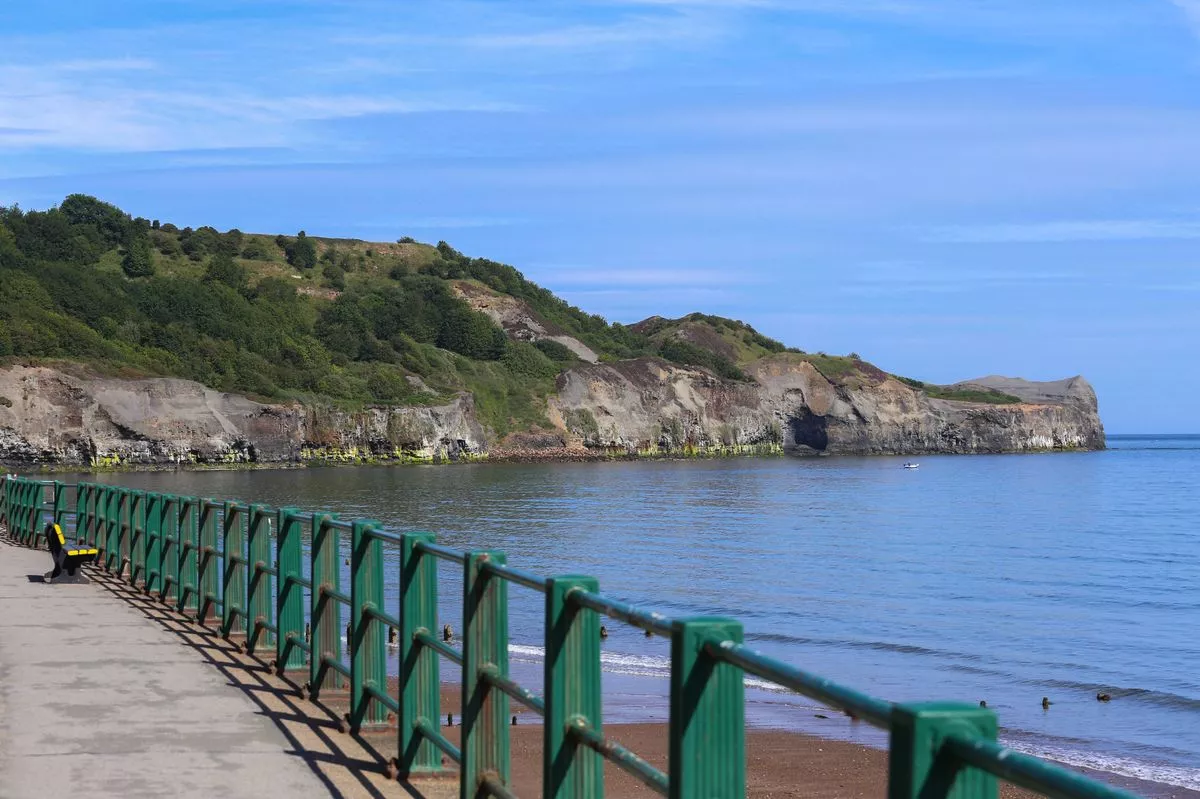Just up the road from Whitby, this village offers golden sandy beaches, rugged cliffs, traditional cottages and ‘the best seafood restaurant’ visitors claim
Nestled along Yorkshire’s captivating coastline, just a short distance from Whitby, lies this charming fishing village boasting secluded beaches – ideal for those seeking a more serene retreat.
Boasting its own stretch of golden sand, Sandsend provides a far more peaceful alternative to its lively neighbouring town. The scenery features dramatic cliffs, gentle sands and the most delightful traditional cottages, creating a picture-perfect British village. When the weather’s fine, both residents and tourists can enjoy a seaside stroll, a refreshing swim or simply unwind whilst catching some sun. A recent guest said on TripAdvisor: “A beautiful coast; would highly recommend. Lovely atmosphere and views. My children loved it here; it’s very peaceful, and if you love a quiet coastal trip, then I would advise visiting here. There are a few pubs, cafes and restaurants too.”
During the warmer months, one holidaymaker remarked: “Beautiful stretch of coastline any time of year. We often visit in the spring/autumn; this was our first time visiting during the summer, and it was great to see this beach in all its glory! Lovely calm water for swimming; it was great for beating the heat after we had walked the length of the beach.”
Originally two separate villages – Sandsend and East Row – the area boasts a lengthy heritage in fishing, operating as a local port engaged in inshore fishing that remains active today. Visitors can savour locally caught fish at the village’s diverse dining establishments, ranging from cafés to restaurants and, naturally, fish and chip shops.
Particularly noteworthy is The Fish Cottage in Sandsend, a charming whitewashed establishment serving as both a seafood restaurant and fish and chip takeaway. Located merely 20 yards from the beach, some diners have even dubbed it “the best seafood restaurant by far”.
Additionally, they operate another location in Robin Hood’s Bay, another picturesque village on the opposite side of Whitby. Following a spontaneous visit, one diner shared on TripAdvisor: “Whenever I’m in the area, I cannot help myself; be it lunch or dinner time, I have to call in, and I am never disappointed. Staff are so so nice and very accommodating. The restaurant, although small, is lovely. If you’re ever in the area, honestly, this fish restaurant is the best.”
If that’s insufficient to entice you, an enchanting castle, Mulgrave Castle, stands just beyond the village and features a fascinating ‘ancient’ tale. According to legend, the site was established by a 6th-century ruler of Hälsingland, with its ruins now serving as a testament to the area’s fascinating past.
One visitor said: “It’s a bit of a slog getting there through the beautiful woods, but it’s well worth the effort. There was only one other person up at the castle, so it felt like the place was all mine. The views are breathtaking, and the ruin itself is very romantic.”

